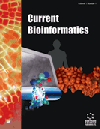
Full text loading...

In medicine, uncovering the mechanisms of diseases is one of the key research fields, which is helpful in discovering and designing effective treatments. On the other hand, drugs are deemed as one of the efficient ways to treat various diseases. It is essential to understand the mechanisms of action of drugs. The investigation of drug-target, drug-disease, and target-disease associations can promote the research progress on the above problems. However, most studies individually investigated drug-target, drug-disease, and target-disease associations, including the computational models for the prediction of above associations. Drugs, targets, and diseases have high-order associations (triple associations). Investigations on such associations can provide a new and high-level perspective for understanding mechanisms of action of drugs and uncovering mechanisms of diseases. However, the computational approaches for predicting such associations are quite limited. The existing approaches cannot make full use of the relationships among drugs, targets, and diseases, limiting their performance.
This study designed an efficient computational model for the prediction of drug-target-disease triple associations. The proposed model first constructed a three-dimensional adjacency matrix to represent known drug-target-disease associations. Raw drug, target, and disease features were derived from this matrix and were further processed by the linear transformation projection, which contained the external associations among different entity types. At the same time, one similarity network was constructed for each entity type (drug, target, or disease), employing the internal relationships in one entity type. The similarity networks and features were fed into a graph convolutional network to extract high-order drug, target, and disease features. Finally, a tensor operation was designed to evaluate the strength of each drug-target-disease association.
Under the five-fold cross-validation, the model achieved AUROC and AUPR of 0.9530 and 0.9577, respectively. The proposed model outperformed some existing models for the same task.
The ablation test proved the reasonability of the structure of our model. Two latent drug-target-disease associations discovered by our model were analyzed, suggesting the generalization ability of the model.
The proposed model was efficient in predicting drug-target-disease associations. It can be a useful tool for discovering higher-order associations among drugs, targets, and diseases.

Article metrics loading...

Full text loading...
References


Data & Media loading...